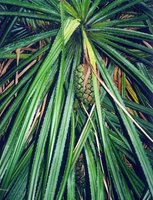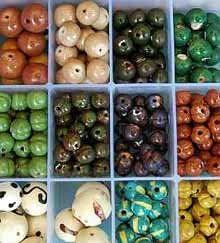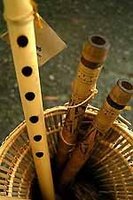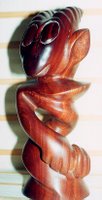Patterns and motifs embedded in indigenous crafts are inspired by people’s way of life and their link to the land. 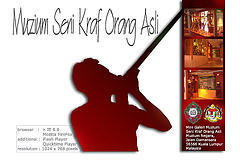
“If you protect the traditional territory, cultures will be protected and conserved,” says Dr Colin Nicholas, coordinator of the Centre of Orang Asli Concerns (COAC), a non-governmental organisation advocating Orang Asli rights.
As modernisation and development creep in, some indigenous communities find it unnecessary to keep certain traditions alive.
In the Mah Meri community on Carey Island, for instance, the bujam, a small pouch weaved from processed pandanus plants was traditionally used for storing tobacco while travelling, or sweets. But most of the womenfolk didn’t see the need to carry on the weaving tradition.
“It’s like saying ‘Why should I make a mat or basket? I can buy plastic bags – it’s so much cheaper and lasts longer’,” adds Nicholas.
“It’s because there’s a commercial demand for Orang Asli crafts that people are willing to continue the practice, and at the same time reinforce their traditions.”
But not all indigenous crafts go through the same fate.
For the Rungus people from Kudat, Sabah, the bead culture prevails even if beadworks are saturated in the craft market and prices are low.
Traditional bead accessories known as pakazan like the bright, colourful pinakol (bandoliers) are worn during weddings or harvest festivals. Married women or girls from (relatively well-to-do) families who reach puberty will don togkol (a type of necklace) as a status symbol.
“Today, these traditional beads are treated as family heirloom and also indicate a person’s status in the Rungus society,” explains Malina Soning who hails from five generations of beadmakers.
“Even if we don’t make any money out of it, we will hand the tradition down to our children because it is an important part of our Rungus identity.”
Threat to the tradition
tradition
Yet, not every community derives a strong sense of identity from their crafts.
Some folks may adapt or modify their traditional art forms to match what society wants. And they do it to such an extent that the craft doesn’t reflect the group’s ideology anymore, Nicholas adds.
Commercial demands and logging, and land-clearing for development also result in the depletion of natural resources for making crafts.
In Ulu Geroh, Perak, a Semai weaver used to weave mats from pandanus plants.
“Now the plant is hard to find and she uses plastic raffia instead because it’s long-lasting, easily available and cheap. Again, supply meets demand,” says Nicholas.
“The wrong demand can cause an impact on people’s culture and environment,” says Nicholas. “We need to find people with the money to buy the right things.”
Finding a compromise
Does the right thing mean sticking to the craft’s traditional form?
“If tourists would rather buy the shorter version of the blowpipe so they can take it home, I wouldn’t say it’s wrong,” says Nicholas. “It is giving somebody a piece of culture in a format they want or can accept.”
Modernising the use of certain crafts is also one way to keep the craft alive.
For example, today, you can use the bujam to store mobile phones or name cards, says Gerai O. A. coordinator Reita Faida Rahim.
A different approach
A main concern of the Malaysian Handicraft Development Corporation (Kraftangan Malaysia) is to ensure sustainable supply of handicraft. An agency under the Ministry of Culture, Arts and Heritage, Kraftangan helps develop, promote and expand the craft industry.
Most indigenous communities produce crafts as a side income.
“We want the younger generation to focus on full-time craft production and turn it into an economic activity, not just as a hobby,” says Deputy Director General (Development) Ismail Mat Amin.
With the help of Kraftangan, the village master craftsman will groom potential artisans while Kraftangan provides raw materials. In some villages like Kampung Kol in Jerantut, Pahang, Kraftangan lends technical assistance to the Jahut carvers who make wooden masks.
On events like National Craft Day, the artisans are invited to showcase their products.
“One of our main concerns is the lack of Orang Asli entrepreneurs,’’ says Ismail. Kraftangan’s aim is to reduce the craftsmen’s dependency on middlemen.
“We try to identify enterprising people and make him or her the leader in the community,’’ explains Ismail.
“This person can mobilise the craftsmen (even if they’re from different villages). They only trust their own people because they have been cheated by middlemen (outsiders) before.”
But Kraftangan admits it is impossible to reach everybody. For now, they can only pick a few communities to develop a successful model that others can follow in the future.
Source : Leong Siok Hui, The Star.
http://www.flickr.com/photos/fauxa/15908269/



